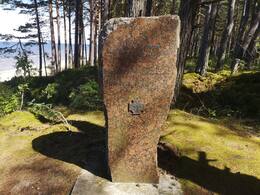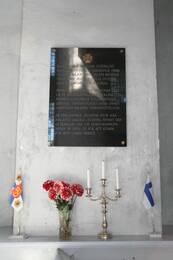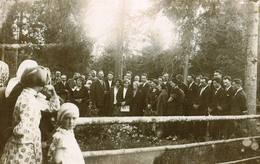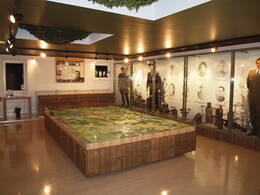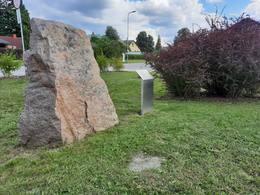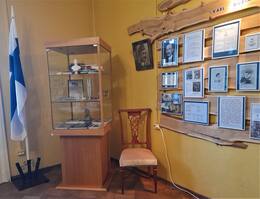Suomijos jėgeriai I WW1
Suomijos jėgeriai (suom. Suomen jääkärit, šved. Finska jägartrupper, vok. Finnische Jäger) buvo iš savanorių iš Suomijos suformuotas Vokietijos imperatoriškosios armijos dalinys, kuris tarnavo kaip 27-asis karališkasis Prūsijos atsargos batalionas (vok. das Königlich-Preußische Reserve-Jäger batalionas – 9illon11217. 1918 m. dalyvavo Pirmojo pasaulinio karo mūšiuose Rytų fronte Latvijos teritorijoje. 1918 m. vasario 13 d. Liepojoje batalionas prisiekė ištikimybę Suomijos vyriausybei ir grįžo į Suomiją. Jėgeriai dalyvavo Suomijos pilietinio karo mūšiuose ir suomių savanorių pulko „Šiaurės berniukai“ nariais taip pat Estijos ir Latvijos laisvės kovose.
Prasidėjus Pirmajam pasauliniam karui, Rusijos imperijos vyriausybė 1914 m. lapkritį parengė programą, skirtą apriboti Suomijos Didžiosios Kunigaikštystės autonomiją ir ją rusinti. Todėl kai kurie tautiškai nusiteikę suomių patriotai nepanoro kariauti Rusijos imperijos pusėje ir kreipėsi į Rusijos priešą Vokietiją, kad padėtų paruošti kariuomenę Suomijos nepriklausomybės kovai su Rusija.
1916 metų pavasarį Vokietijoje jau buvo beveik 2000 apmokytų suomių karių, o jų dalinys Vokietijos kariuomenėje buvo pavadintas 27-uoju Karališkuoju Prūsijos jėgerių batalionu. Nuo 1916 m. birželio 12 d. iki rugpjūčio 24 d. kovinės patirties sėmėsi būdama Vokietijos 8-osios armijos Jelgavos grupės (Gruppe Mittau) dalis Rytų fronto sektoriuje netoli Pēterniekų prie Misos upės. Vėliau tais metais batalionas buvo perkeltas į Rygos įlankos pakrantę prie Klapkalnciemo. Čia nuo 1916 metų rugpjūčio 27 iki gruodžio 13 dienos suomiai buvo atsakingi už šiauriausią Vokietijos Rytų fronto sektorių. Po žiemos kovų 27-asis karališkasis Prūsijos atsargos batalionas 1917 m. kovo 25 d. buvo perkeltas į Liepoją, kur išbuvo iki 1918 m. vasario mėn. Tuo metu batalione buvo apie 1400 karių. Prasidėjus Bresto-Litovsko taikos deryboms suomių jėgeriai buvo atleisti iš Vokietijos imperatoriškosios armijos. 1918 m. vasario 13 d. Liepojos Švč. Trejybės evangelikų bažnyčioje batalionas prisiekė ištikimybę Suomijai. Jau vasario 15 dieną jėgeriai laivu išplaukė iš Liepojos uosto, kad per Vaasos uostą sugrįžtų į tėvynę ir dalyvautų Suomijos pilietiniame kare prieš raudonuosius. Gerai apmokyti jėgeriai padėjo sukurti naują Suomijos nacionalinę armiją, kuri laimėjo pilietinį karą.
Daugiau informacijos šaltinių
Juris Ciganovas. Suomijos jėgeriai Latvijoje. SARGS.LV (2018-03-19): https://www.sargs.lv/lv/pirmais-pasaules-kars/2018-03-19/somijas-jegeru-gaitas-latvija
Elvita Ruka – Birzulė. Per suomių jėgerių kovų vietas. Latvijos leidinys, Nr. 103. (1997-04-24) : https://www.vestnesis.lv/ta/id/43133
Ištikimas vėliavai ir teisėtai Suomijos vyriausybei. liepājniekiem.lv (2008 02 19): https://www.liepajniekiem.lv/zinas/kulturvide/uzticigi-karogam-un-somijas-likumigajai-valdibai/
Susijusi laiko juosta
Susijusios vietos
Monument in the memory of Finnish jaegers-sappers
Located in Engure district, on the side of the A10 motorway near Smārde pub.
A memorial was erected on the site where the Battle of Smārde took place in the field in 1916 during the First World War. A company of Finnish Jaeger engineers (~ 200 men) took part in the battles as part of the German army. Smell's Day has become an official holiday for the Finnish Army's military engineers, which is still celebrated.
The Finnish Jaegers were a unit of the German army formed during World War I. It consisted mainly of nationally-minded Finnish volunteers who had left the territory of the Russian Empire, Finland. The Battle of Smārde was one of the most important offensive battles of the Finnish Jaegers, where a new tactic was used at that time.
A month after the incident, the Russian army attacked the German army near Smārde. Latvian combat units carried out reconnaissance around Smārde, built a supply road “Latviešu ceļš” across the bog and took part in battles. Around 300 Latvian fighters fell in the battles. Like the Finnish Jaegers in the German army, the Latvian riflemen in the Russian army were the founders of their national states and armies.
Memorial plaque to the Finnish Jaegers in the Holy Trinity Cathedral in Liepāja
A memorial plaque dedicated to the Finnish Jaegers is located in Liepāja Holy Trinity Cathedral, Lielā iela 9.
The Finnish Jägers were a unit of the German Empire, formed by volunteers from Finland, which, under the name of the 27th Royal Prussian Jäger Battalion, took part in the First World War battles on the Eastern Front of Latvia in 1916-1917.
During World War I, the Grand Duchy of Finland was part of the Russian Empire and many Finns wanted a German victory in the war in order to promote the establishment of an independent state. On 20 November 1914, the Finnish Independence Movement was founded in Helsinki, which also planned to form the armed forces of an independent state. When the German government confirmed its readiness to train the Finns in January 1915, the recruitment of volunteers began and by the spring of 1916 almost 2,000 soldiers were stationed in Germany and were named the 27th Royal Prussian Jäger Battalion.
From June 1916 the battalion was on the Riga front, when it was moved to Liepaja until March 1917. After the February Revolution, the Russian Empire began to collapse and on 6 December 1917 the Finnish Parliament declared independence.
On 13 February 1918, the Battalion swore allegiance to Finland in the Holy Trinity Church in Liepāja. On 15 February 1918, the battalion left the port of Liepaja by ship to return home to the port of Vasa and take part in the Finnish Civil War against the Reds, who had staged a coup d'état on 27 January 1918. The well-trained and combat-experienced Jägers formed the core of the Finnish national army and a large number became commanders during the Second World War.
The battalion's flag, consecrated in Holy Trinity Church, became the first flag of independent Finland.
Memorial plaque to the Finnish Jaegers in the Holy Trinity Cathedral in Liepāja
A memorial plaque dedicated to the Finnish Jaegers is located in Liepāja Holy Trinity Cathedral, Lielā iela 9.
The Finnish Jägers were a unit of the German Empire, formed by volunteers from Finland, which, under the name of the 27th Royal Prussian Jäger Battalion, took part in the First World War battles on the Eastern Front of Latvia in 1916-1917.
During World War I, the Grand Duchy of Finland was part of the Russian Empire and many Finns wanted a German victory in the war in order to promote the establishment of an independent state. On 20 November 1914, the Finnish Independence Movement was founded in Helsinki, which also planned to form the armed forces of an independent state. When the German government confirmed its readiness to train the Finns in January 1915, the recruitment of volunteers began and by the spring of 1916 almost 2,000 soldiers were stationed in Germany and were named the 27th Royal Prussian Jäger Battalion.
From June 1916 the battalion was on the Riga front, when it was moved to Liepaja until March 1917. After the February Revolution, the Russian Empire began to collapse and on 6 December 1917 the Finnish Parliament declared independence.
On 13 February 1918, the Battalion swore allegiance to Finland in the Holy Trinity Church in Liepāja. On 15 February 1918, the battalion left the port of Liepaja by ship to return home to the port of Vasa and take part in the Finnish Civil War against the Reds, who had staged a coup d'état on 27 January 1918. The well-trained and combat-experienced Jägers formed the core of the Finnish national army and a large number became commanders during the Second World War.
The battalion's flag, consecrated in Holy Trinity Church, became the first flag of independent Finland.
Suomių vaikinų kambarys
This museum room is situated in Saadjärve Nature Centre in the small borough of Äksi.
It was opened in 2002 on behalf and with the support of the Finnish Boys Association, Tartu Municipal Government and the Finnish state.
It provides an overview of the battles in Finland and Estonia in which the Finnish Boys participated during World War II. Here you will see a scale model depicting the battles fought in Jõgeva and Tartu counties and the uniforms, equipment, armaments, military decorations, personal belongings and photos of the Finnish Boys. The bunker is also open to visitors.
Free admission.
Monument in the memory of Finnish jaegers-sappers
Located in Engure district, on the side of the A10 motorway near Smārde pub.
A memorial was erected on the site where the Battle of Smārde took place in the field in 1916 during the First World War. A company of Finnish Jaeger engineers (~ 200 men) took part in the battles as part of the German army. Smell's Day has become an official holiday for the Finnish Army's military engineers, which is still celebrated.
The Finnish Jaegers were a unit of the German army formed during World War I. It consisted mainly of nationally-minded Finnish volunteers who had left the territory of the Russian Empire, Finland. The Battle of Smārde was one of the most important offensive battles of the Finnish Jaegers, where a new tactic was used at that time.
A month after the incident, the Russian army attacked the German army near Smārde. Latvian combat units carried out reconnaissance around Smārde, built a supply road “Latviešu ceļš” across the bog and took part in battles. Around 300 Latvian fighters fell in the battles. Like the Finnish Jaegers in the German army, the Latvian riflemen in the Russian army were the founders of their national states and armies.
Memorial stone to the Finnish Volunteer Regiment "Boys of the North"
Located in Alūksne, Jāņkalna Street 52, near Alūksne Narrow Gauge Railway Station.
On February 23, 2019, to mark the centenary of the Latvian War of Independence, a special memorial was created at the initiative of the Association of Independence Fighting Traditions (Finland) to honor the fallen Finnish volunteers, with a special boulder and information board. The memorial stone to Alūksne was removed from the Salpa line in Finland, which was built in 1940-1944. to protect the eastern border of Finland. The 1,200 km long Salpa line is one of the most important lines of defense in independent Finland, as well as one of the strongest and best-preserved defenses of its kind in Europe since World War II.
The stone brought to Aluksne symbolizes the struggle for independence of two nations - the Finns and the Latvians. A group of Finnish volunteers "Northern Boys" went to help Latvians protect the freedom of the new Latvian state. On February 21, 1919, the "Northern Boys" took part in fierce battles around Alūksne (Marienburg). After a five-hour battle at Alūksne railway station, the Finns occupied Alūksne. 23 Finnish volunteers were killed and many injured in the fight.
Collections of the Apriķi Museum and areas of activity of the Red Partisans
The Apriķi manor house houses the Apriķu Museum, whose exhibits tell about the ancient history of the region. The museum exhibits an exposition about the Finnish military figure Karl Gustav Mannerheim - 175 museum items, the interactive stand "KGMannerheim and Apriķi" (in three languages - Latvian, English and Finnish) with 6 sections - about the Apriķi manor, about KGMannerheim as a commander in the Winter War, as the freedom of Finland the leader of the battles and about his connection with the Aprikais.
The museum also displays World War II items with symbols of the German and Red Army, as well as a map - the areas of activity of the Red Partisans) and descriptions of the Red Partisans.
The Baroque ensemble of the Aprikku manor (Apprikken) building was formed by the Alokste River in the 18th century. at first. 20th century in the beginning, the owner of the manor is Carl Gustav Mannerheim, who later became the president of Finland, and is known as the author of the legendary Mannerheim line - the fortification system during the Winter War.
Susijusi istorija
Apie Suomijos jėgerius Latvijoje
Suomijos jėgerių istorija įdomi tuo, kad ji itin panaši į Latvijos karių likimus Pirmajame pasauliniame kare ir didelę jų svarbą kuriant tautinę valstybę. Pirmasis pasaulinis karas taip pat buvo galimybė suomiams padėti pamatus Suomijos nepriklausomybei ir jos kariuomenės sukūrimui. Šaltinis aprašo įvykį, kai Latvijoje atidengiamas paminklas Suomijos jėgeriams.
Suomijos jėgerių vėliavos pašventinimas Liepojos Šventosios Trejybės katedroje
Pirmoji Nepriklausomos Suomijos vėliava buvo pašventinta 1918 metais Liepojoje, Švč.Trejybės bažnyčioje, kur suomių jägeriai prieš išvykdami namo prisiekė būti ištikimi teisėtai Nepriklausomos Suomijos vyriausybei.






